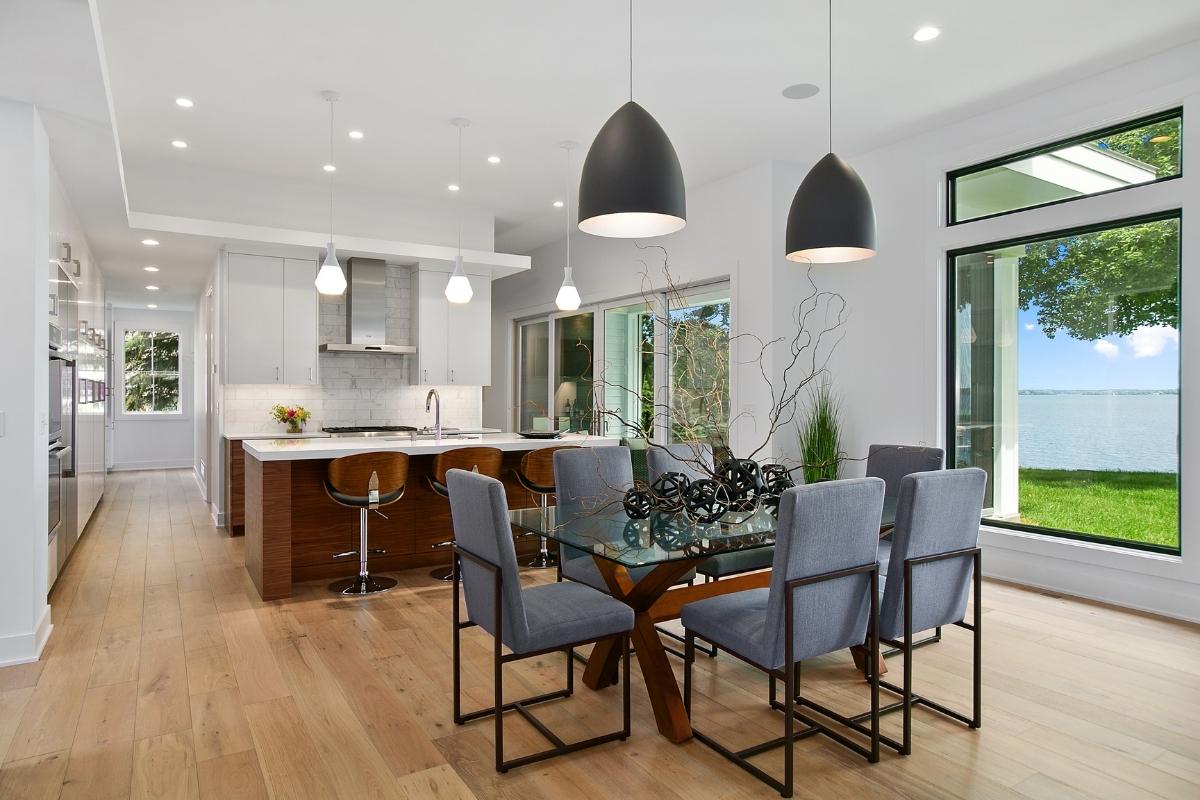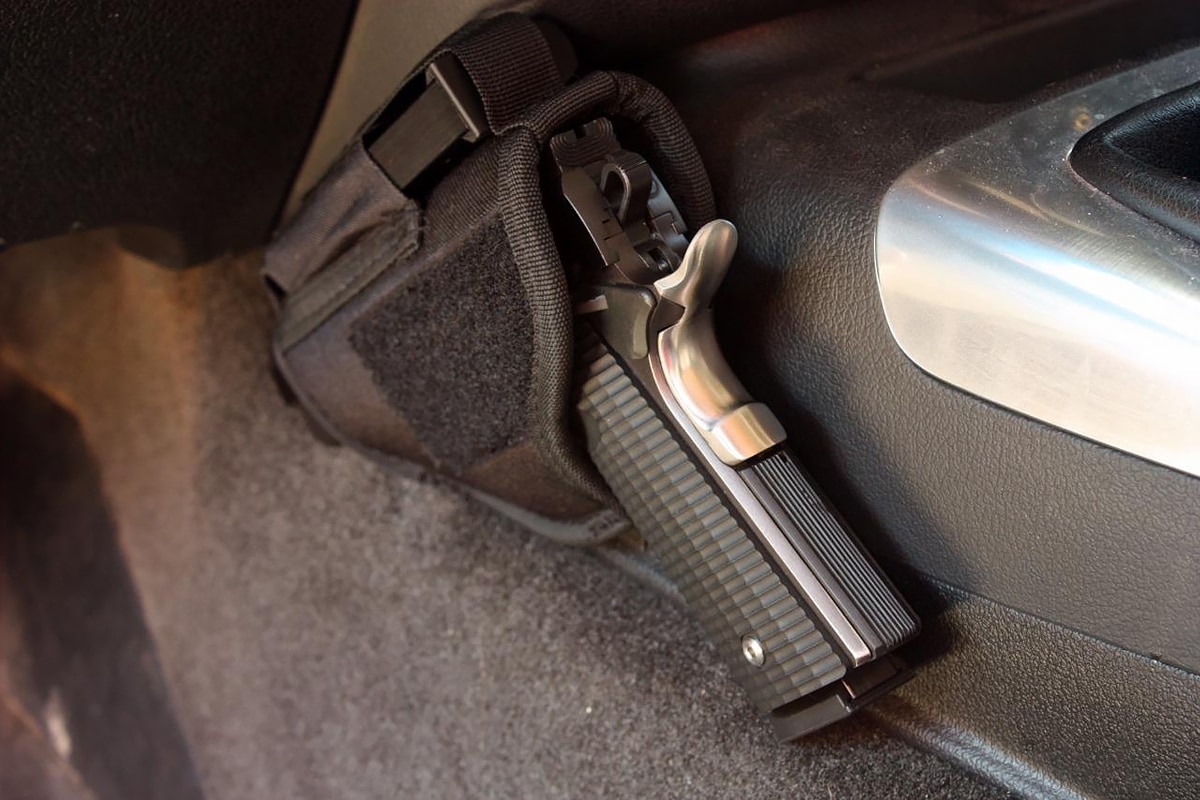Thinking through the right lighting layout can make a boring room into a wonderfully useful space that creates just the right mood and atmosphere for anything you want to do – from hosting an intimate dinner party to getting the kids going on an art project.
And there’s no shortage of lighting fixtures and fittings available, but with so many to choose from it can be difficult to know what will produce the effect you are after and what to use where.
This short guide will enable you to choose the right kind of lighting fixtures for every room.
Downlights
These have become pretty common over recent years, especially in kitchens, bathrooms, and bedrooms. They are usually recessed into the ceiling and cast distinct pools of light onto the surface underneath.
They can also be mounted on the ceiling surface and can be fixed or moved about (directional). They suit all types of home, I.e., modern or period, but installing them may cause a bit of a headache if you’ve got period plasterwork that you don’t want to touch, or you might not have enough recess room in the ceiling. They also benefit from being dimmable if you have the right fittings and use the correct light bulbs.
You need to be careful about where you put them, and they work best above bathroom and kitchen surfaces. Directional ones (eyeball fittings)can be used to great effect for accent lighting to highlight a particular feature e.g., a fireplace or cabinet containing family heirlooms.
However, the downside is that the lighting is very directional and does not diffuse well. This means that without reflective surfaces and wall lights, or other accent lighting, the edges of the room can become quite gloomy. And if you go in for long rows of them, you can end up feeling like you’re in a shop rather than a home.
Uplights
These are designed to throw light up onto the ceiling, which then bounces off and creates a lovely soft look. They are best used in rooms that have pale-colored ceilings and where glare can be an issue – such as in studies.
They are usually designed to be tall and slender and not be eye-catching as the light they create is actually the important part, so it’s ok to put them behind sofas and in corners.
They work well in pairs and should be fixed at eye level or higher. It’s also possible to create a similar effect using a clip-on spotlight angled upwards, although this will require a suitable surface to be clipped to and can end up looking untidy.
Ceiling Fittings
These come in all sorts of shapes and sizes – the most common being tracks of spotlights. The key thing to think about is how they will distribute the light in the room. While a fitting may look fantastic and become a feature in its own right, the excitement will soon wear off if it doesn’t do the job it’s meant to. This could be the case if the design means that you can only use very low lumens bulbs for fear of scorching or burning the fitting.
By their nature, track spotlights tend to have a contemporary feel, and whilst they can be made to work well alongside Victorian features, you’ll need to think carefully about how to mix them. A chrome and steel light fitting might look a bit incongruous attached to a Victorian plaster ceiling rose!
It’s also very important to look at the effect of the light fitting when it’s off during the daytime, as it can look very different without the warm rosy glow of a light bulb.
You can attach rows of low-voltage light bulbs to a track with no need for a transformer, but it’s a good idea to attach them to more than one circuit so you can have just some of the lights on rather than it being all or nothing. If you’re getting into this territory, it’s probably best that you call in the pros and get advice from an electrician.
Pendant Lights
These are lights that hang from the ceiling and come in all shapes and sizes. They have become a very contemporary design feature. They are good for general ambient lighting but tend to flatten shadows and cast a dim light, so they need augmenting with other types of lighting.
It’s good to fit a dimmer and also put them on a long flex so you can change their height or carefully arrange them to hang over features like the dining room table by judicious use of hooks. They can provide pleasant illumination without being too bright, so guests can really enjoy their meal and appreciate the look of it as well as the taste and smell.
Wall Lights
These are fitting mounted on the wall, from fittings that use shades to frosted glass. They are designed to diffuse light into the room and are ideal for adding to general ambient lighting.
The shape of the fitting naturally determines where the light goes, so ceramic bowls diffuse light upwards towards the ceiling whilst translucent bowls will diffuse in all directions. They work extremely well in living rooms and hallways.
Wall Washers
These are lights that are recessed into the ceiling but are angled to have light flow down the walls – hence the name.
Standard Lamp
Beyond the original central ceiling light bulb, these are probably the oldest form of domestic lighting. They come in all sorts of shapes and sizes and can be featured in their own right. They are very movable (depending on your electricity sockets) and you can experiment to see where best to place them. Traditionally they have been used to assist with task lighting, providing enough light to read by. However, depending on the shape and type of shade, they may simply provide a warm diffuse non-distracting light in a particularly dark corner.
You also have the added flexibility of being able to change the shade if you change your decor. Tall lamps need larger shades for balance, and oversized drum shades work very well on long thin bases.
Tapered lampshades go well with more ornate, traditional lamp bases. Translucent shades are best for providing general lighting, but if you want to make a statement try using an opaque shade to create a bit of drama and contrast.
Table Lamps
A close cousin to the standard lamp, these are possibly the most flexible (and cheapest) forms of accent lighting. Used in pairs with one at each end of the sofa, they can add a very sophisticated ‘country house’ look or simply provide task lighting on tables or worktops.
They best provide a warming ambiance, and the light bulbs used in them shouldn’t be too bright. Possibly the most important table lamp is the bedside light, and lovely bedside lights can complete the ambiance of a bedroom whilst still serving their primary purpose.
Fairy Lights
Although fairy lights are synonymous with Christmas and children’s rooms, they can offer a fantastic and magical finishing touch to a room. With battery and solar-powered options, they can be draped over bedroom headboards, arranged around trees and branches outside to draw the eye out of a feature window, or arranged in a glass vase as a table center piece or fireplace decoration.









